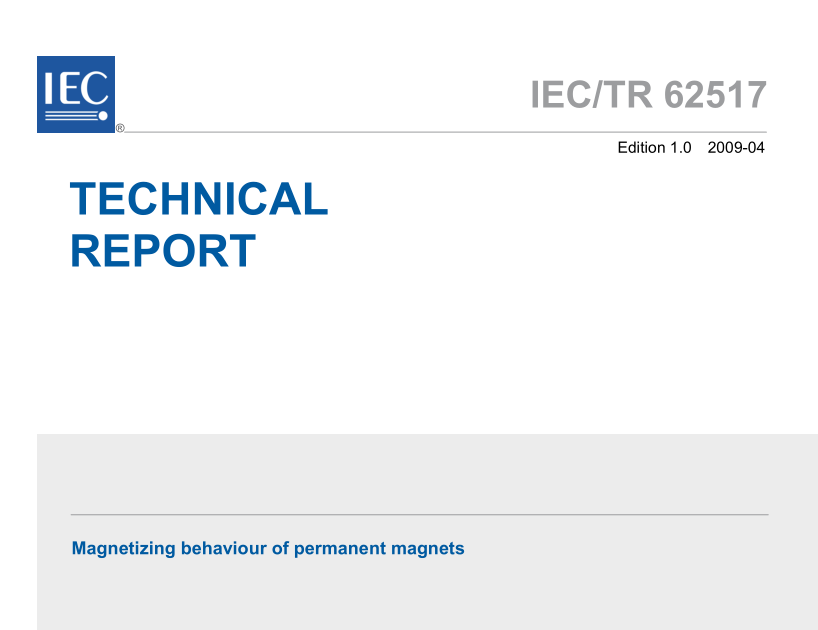IEC TR 62517:2009 pdfダウンロード

IEC TR 62517:2009 pdfダウンロード Magnetizing behaviour of permanent magnets
1 Scope
It is within the scope of this technical report to describe the magnetizing behaviour of permanent magnets in detail. Firstly, in Clause 3 the relationship between the applied magnetic field strength and the effectively acting internal field strength is reviewed. In Clause 4 the initial state prior to magnetization is discussed. Then, in the main Clause 5, the magnetizing behaviour of all common types of permanent magnets is outlined. The clause is subdivided according to the dominant coercivity mechanisms, namely the nucleation type for sintered Ferrites, RE-Fe-B and SmCo 5 magnets, the pinning type for carbon steel and Sm 2 Co 1 7 1 magnets and the single domain type for nano-crystalline RE-Fe-B, Alnico and Cr- Fe-Co magnets. Finally, the recommended magnetizing field strengths for modern permanent magnets are compiled in a comprehensive table.
2 Effective magnetizing field strength For magnetization of permanent magnets, the internal magnetic field strength H int in the magnet is the critical parameter. The internal field strength is determined by the applied field strength H appl and the self-demagnetizing field strength H demag of the magnet or the magnet assembly. The self-demagnetizing field strength depends on the dimensions of the magnet or the load line of a magnet assembly and the polarization of the magnet material, see equation (1 ):
H int = H appl – H demag = H appl – N·J/ μ 0 (1 ) N denotes the demagnetization coefficient and J the polarization of the magnet material. Most advanced magnets are magnetized by a short pulse field, achieved by discharging a capacitor bank through a copper coil. The duration of the field pulse must last sufficiently long, in order to overcome the eddy currents at the surface of the magnets, in particular for large blocks.
In general, a pulse duration of 5 ms to 1 0 ms is sufficient for complete penetration. The penetration depth λ , see equation (2), depends on the electrical resistance ρ, the permeability μ of the magnet material and the frequency f of the field pulse [1 ] 2 : λ = K f ⋅ ⋅ μ ρ (2) K denotes a constant. Preferably, magnets will be magnetized after assembly, since handling of unmagnetized magnets is easier and prevents contamination by ferromagnetic particles. In addition chipping of magnet-edges due to the mutual attraction of magnet parts is avoided.
- Previous:IEC TR 62513:2008 pdfダウンロード
- Next:IEC TR 62540:2009 pdfダウンロード